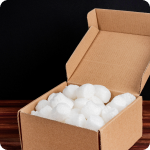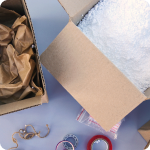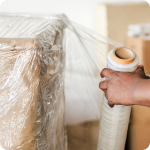Internal

Leave no space. It is important to completely fill empty space within the box to avoid contents moving during transit which can cause damage to both contents and box

Place void filler on the base of the box then around the item you are shipping. Ensure there are no gaps for movement

Choose suitable void filling materials that provide sufficient support for the weight of the shipment contents. Some materials may sink or deflate under the weight of the content which may eventually leave empty space inside the box

Wrap items individually and use dividers

Avoid damage caused by individual items making contact during transit, especially when items are stacked

Small or loose items should be placed in an inner container or plastic bag to avoid the items separating during transportation

Wrap extra layers of bubble wrap (suggesting three layers) around the packaging to absorb the impact when collision occurs

A good seal helps to protect your package during transit. Use pressure sensitive tapes such as polypropylene tape (brown plastic tape), vinyl adhesive tape (electrical tape), or fiber reinforced paper tape (duct tape) to seal your package

Ensure all seals are sealed using the H-taping method